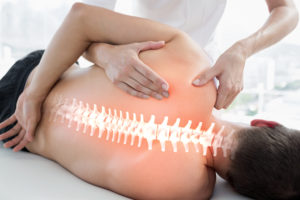Upper limb injuries and disorders can have a profound impact on our ability to perform even the most basic daily functions. For the purpose of this article, we will treat upper limb disorders as separate from injuries due to accidents, in that the latter typically occurs as a result of a sudden trauma; the former occurring due to prolonged forces, which over time, cause damage.
Work-related upper limb disorders (WRULDs)
Using the parlance of the Health and Safety Executive (HSE), WRULDs is a classification of musculoskeletal disorder, which specifically impacts the hands, wrist, arms, shoulder, and neck. Last year, there were 229,000 recorded instanced of WRULDs, resulting in 3.9 million working days lost (17.2 days per case). Clearly, these disorders affect significant numbers of people each year, so it is useful to understand what these disorders are, and how do they occur over time in the workplace.
Types of WRULDs
Some of the main types of WRULDs and their causes include:
- Carpal Tunnel Syndrome (CTS): caused by compression of the median nerve in the wrist, leading to pain, and pins and needles
 in the fingers and hand. This is commonly caused by incorrect positioning (e.g. at a desk) and vibrating machinery.
in the fingers and hand. This is commonly caused by incorrect positioning (e.g. at a desk) and vibrating machinery. - Non-specific arm pain: sometimes referred to as repetitive strain injury (RSI), and can also be caused by poor workstation setup.
- Tenosynovitis: inflammation of the fluid-filled sheath (synovium) around the tendons in the wrist. This condition can also be caused by overuse of the wrist.
- Lateral epicondylitis (otherwise known as tennis elbow): pain around the outside of the elbow, often caused by working in fixed or awkward positions, repetition, and excessive force.
Given the underlying causes of upper limb disorders, and the widespread awareness of these risks, there is no real reason for these to ever develop, especially if employers are vigilant about the design of the workplace environment, the need for breaks, and the variety of task performed by workers.
Occupations most impacted by WRULDs
According to the Labour Force Survey (LFS), the construction industry has the highest rate of upper limb disorders, at 960 cases per 100,000 workers; this is significantly higher than the average across all industries (550 per 100,000). Public administration and health and social work professions were also higher than the average.
In terms of specific occupations, for those working in a skilled trade (e.g. carpenter, plumber, and electrician), the chance of suffering an upper limb disorder is much higher than average (nearly double). Those working as process, plant and machine operatives, see the second highest rate of these disorders – undoubtedly due to the repetitive nature of such work.
Upper limb injuries due to sudden trauma
Trauma injuries to the upper limbs can have severe ramifications for individuals. These may involve any part of the body from the fingertip, to the elbow, and may include sprains & strains, lacerations, dislocations of joints, crushing injuries, and fractures. There are many reasons why these types of injuries occur within the working environment, the most common being manual handling, lifting or carrying (the cause of 20% of non-fatal workplace accidents), and slips and trips (the cause of 18% of non-fatal workplace accidents).
Machinery-related accidents can also cause significant, and often life-changing upper limb injuries. In one case of this type, a 17-year-old man had his arm pulled into a machine used to make agricultural building cladding, in November 2016. The accident happened as the teenager fed sheet metal into the machine, however, his arm became trapped between the metal and the rollers. As a result, he suffered extensive damage to his left forearm, and now suffers from chronic pain .
Following an investigation by HSE, it was discovered that there was no safety guard in place, and as a result, it was possible to reach the dangerous mechanics of the machine while it was in operation. It was also found that the company’s guillotine machine, was also unsafe. The HSE officer who oversaw the case stated, “The dangers of unguarded machinery are well-known. If Malcolm E Taylor (the employer) had ensured that suitable guarding was in place, then this incident would have been avoided.” As a result, the firm was fined £12,000.
How do I claim compensation if I have an upper limb injury or disorder due to my occupation?
If have been injured at work, the law is on your side. Under the Health and Safety at Work etc Act 1974, your employer has a strict legal duty to protect you from harm while you are carrying out your job. If they were negligent, and this directly led to your accident, it is likely you will be able to claim. The first step to seeking compensation, once your immediate medical needs have been met, is to contact an experienced specialist workplace personal injury solicitor. Don’t leave this to chance; by ensuring you have a specialist occupational personal injury solicitor handling your case, with a strong track record in this type of injury or disorder, you have the best chance of securing an award that fully compensates you for your pain, suffering, and financial losses. If you are unsure of the merits of your case, call one of our specialist solicitors today who will take the time to listen to what happened to you, and provide you with the best advice available.
At Russell Worth Solicitors we specialise in personal injury claims. If you have suffered a workplace injury and would like a free claim assessment, please call us now on 0800 028 2060 or complete our Online Claim Assessment.

